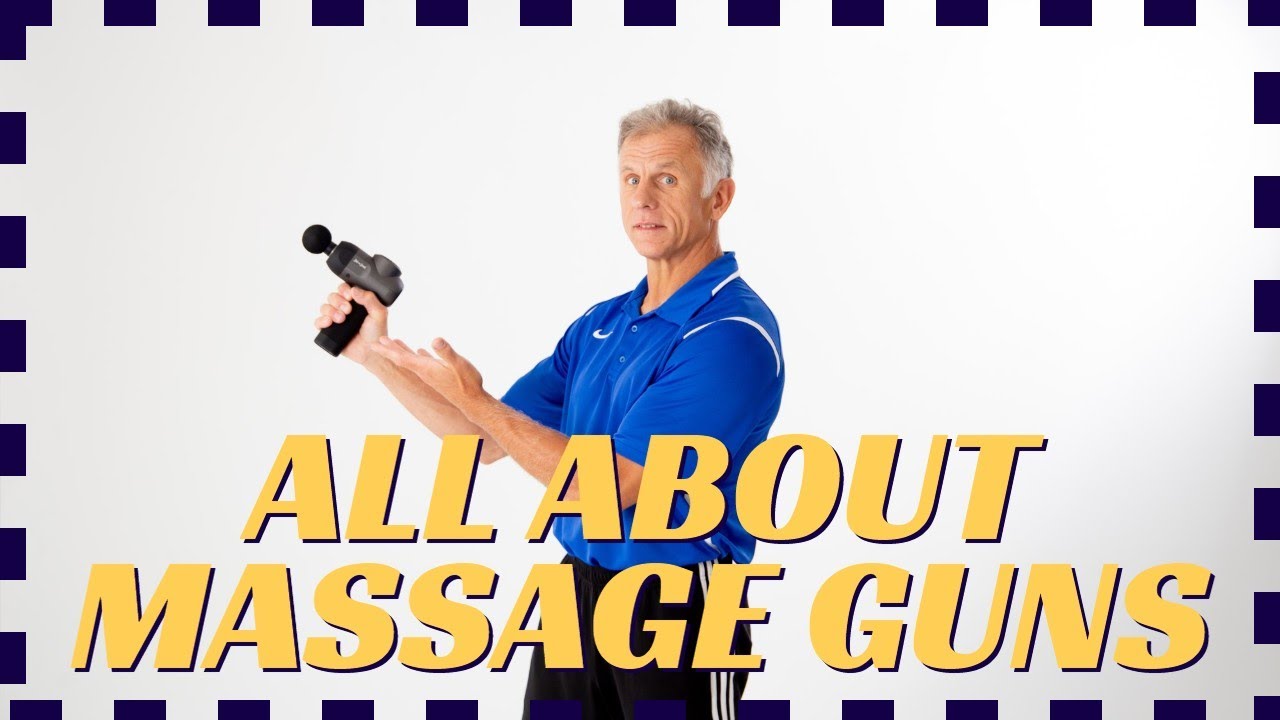Massage guns have taken the fitness and wellness world by storm, becoming a go-to tool for athletes, physical therapists, and everyday folks looking to ease muscle tension and boost recovery. Renowned physical therapists Bob Schrupp and Brad Heineck, known for their practical advice, swear by these devices when used correctly. In this article, we'll dive into why massage guns work, how to use them safely, and tips to maximize their benefits - all while keeping Bob and Brad's insights front and center.
Why Massage Guns Are So Effective
Massage guns deliver rapid, targeted percussion to your muscles, penetrating deeper than traditional massage techniques.
This deep-tissue stimulation offers several benefits:
- Improved Muscle Pliability: Tight or knotted muscles from workouts, injuries, or poor posture can restrict movement and cause pain. Massage guns break up scar tissue and adhesions, making muscles more flexible and less prone to injury.
- Enhanced Circulation: The percussive motion boosts blood flow to the targeted area, delivering oxygen and nutrients while flushing out waste. This speeds up recovery and reduces soreness.
- Pain Relief: By stimulating nerve endings and releasing endorphins, massage guns can dull pain signals, offering relief for conditions like muscle strains or chronic tension.
- Convenience: Unlike a trip to a massage therapist, massage guns let you treat yourself at home, saving time and money.
How to Use a Massage Gun Safely
While massage guns are powerful tools, improper use can lead to discomfort or injury. Bob and Brad share these expert tips to ensure you're using your device correctly:
1. Choose the Right Massage Gun
Massage guns vary in power and features. If you're muscular or an athlete, opt for a high-powered model with strong amplitude (the distance the head travels back and forth). For smaller frames or those with less muscle mass, a lighter, less intense model works better. Bob notes, "Price matters too - early models were pricey, but today's options are affordable and effective."
Most guns come with multiple attachments:
- Round head: Great for large muscle groups like quads or glutes.
- Pointed head: Targets trigger points or knots.
- Flat head: Covers broad areas evenly.
- Air-cushioned head: Gentler for sensitive spots.
2. Start Low and Slow
Always begin with the lowest speed setting, especially if you're new to massage guns or treating an injury. Bob advises, "If it's painful, you're doing it wrong." Work the muscle for 2-5 minutes, focusing on the muscle belly (the meaty part) rather than bones or joints.
3. Target the Right Areas
Massage guns shine on large muscle groups like:
- Calves: Perfect for runners or those with tight lower legs.
- Hamstrings: Ideal for strains or post-workout soreness.
- Glutes: Loosens the piriformis muscle, which can cause sciatica-like pain.
- Quadriceps: Relieves tension from sitting or intense workouts.
For smaller areas, like the forearm (think tennis elbow), use a softer attachment and work around the tender spot initially to avoid aggravating it.
4. Avoid These Danger Zones
- Neck: Too many nerves and arteries; stick to the upper traps instead.
- Bony areas: Percussing bones is painful and ineffective.
- Injured or inflamed spots: Work around, not directly on, acute injuries until pain subsides.
- Sensitive areas: Avoid the groin, armpit, or anywhere you feel a pulse.
5. Incorporate It Into Your Routine
Use a massage gun before exercise to warm up muscles or after to aid recovery. Brad suggests pairing it with stretching: "Massage first, then gently stretch to lock in the benefits." For chronic issues, like a stubborn calf strain, hit the area twice daily for consistent relief.
Common Mistakes to Avoid
To get the most out of your massage gun, steer clear of these pitfalls:
- Going Too Hard: High speeds on tender areas can bruise or inflame tissue. If pain persists after 15-30 seconds, back off or work around the spot.
- Ignoring Feedback: A slight tingling or relaxed feeling post-session is good. Sharp pain or soreness that lingers means you overdid it.
- Skipping Warm-Up: Use the gun to prep muscles before activity, not just for recovery.
- Neglecting Maintenance: Keep your gun charged and clean attachments regularly for hygiene.
The Bottom Line
Massage guns can be fantastic tools for the right situations, but they're not appropriate for every body part or condition. By avoiding these 10 danger areas, you can safely enjoy the benefits of percussion therapy without risking injury or complications.
Always start with the lowest setting when trying a massage gun for the first time, and remember that more pressure isn't always better. When in doubt, consult with a physical therapist or healthcare provider about the safest way to use your massage gun for your specific needs.
Recommended Massage Guns for Safe Recovery
The Ultimate Compact Massage Gun with Dual Therapy
The C2 Pro combines percussion therapy with innovative heat and cold treatment options in a compact design. With moderate power and multiple speed settings, this versatile massage gun works effectively for most users.
The Best Mini Massage Gun for On-The-Go
Don't let its mini size fool you—the Q2 Pro delivers decent power and dual heat/cold therapy in an ultra-portable package. Ideal for on-the-go recovery, this lightweight device fits easily in gym bags or purses while maintaining enough strength for effective muscle release. Perfect for travelers and busy professionals.
The Most Powerful Massage Gun for Professional Recovery
The D6 Pro offers exceptional power that rivals professional devices at an accessible price point. With industry-leading stall force and amplitude, it's designed for deep tissue work on dense muscles. Athletes and bodybuilders will appreciate its professional-grade performance for serious recovery needs.
FAQs About Massage Gun Safety
Q: Can I use a massage gun every day? A: For most healthy individuals, daily use on appropriate areas is fine, but it's best to give tissues a chance to recover between sessions.
Q: How long should I use a massage gun in one area? A: Generally, 1-2 minutes per muscle group is sufficient. Longer isn't necessarily better.
Q: Are cheaper massage guns safe to use? A: Quality varies widely. Look for reputable brands with safety features and multiple head attachments for versatility.
Q: Can children use massage guns? A: With supervision and on appropriate settings, older children may benefit, but always consult with a pediatrician first.
Q: Should massage guns hurt during use? A: No. You should feel pressure and perhaps mild discomfort, but never pain. If it hurts, stop immediately.



Share:
10 Massage Gun Dangers: When Not to Use Your Massage Gun
How to Use a Massage Gun for Trigger Finger Relief